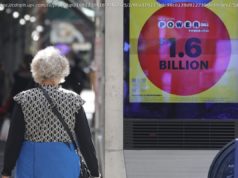A new film details the reason the star postponed her recent tour—and will test cultural attitudes about gender, pain, and pop.
“Pain without a cause is pain we can’t trust,” the author Leslie Jamison wrote in 2014. “We assume it’s been chosen or fabricated.”
Jamison’s essay “Grand Unified Theory of Female Pain” unpacked the suffering-woman archetype, which encompasses literature’s broken hearts (Anna Karenina, Miss Havisham) and society’s sad girls—the depressed, the anorexic, and in the 19th century, the tubercular. Wariness about being defined by suffering, she argued, had led many modern women to adopt a new pose. She wrote, “The post- wounded woman conducts herself as if preempting certain accusations: Don’t cry too loud; don’t play victim.” Jamison questioned whether this was an overcorrection. “The possibility of fetishizing pain is no reason to stop representing it,” she wrote. “Pain that gets performed is still pain.”
How Beyoncé and Kanye Made Marriage Cool Again
Jamison’s work might come to mind when watching Lady Gaga’s new documentary, Gaga: Five Foot Two, or when reading about the singer postponing her European tour. The pop star this month informed the world that she suffers from fibromyalgia, which causes chronic muscle pain. In the documentary, she visits the doctor, she curls up on a couch, she cries in agony. On Instagram, she prays while holding a rosary. The caption is a lengthy apology to her fans for having to postpone upcoming performances due to her condition.
While forthright, Gaga’s statements about her struggle have been somewhat couched in embarrassment—and the public has responded with both sympathy and skepticism. “I use the word ‘suffer’ not for pity, or attention, and have been disappointed to see people online suggest that I’m being dramatic, making this up, or playing the victim to get out of touring,” she wrote. It’s not the first time she’s been doubted or criticized about something that her body has gone through. When hip surgery made her cancel her 2013 tour, some folks accused her of faking her injury because of underwhelming ticket sales.
In many ways, this skepticism is deeply familiar. It is a documented fact that women tend to report more pain than men—but also that their pain is seen as less credible, with women less likely to be given strong pain relievers, facing inordinately long wait times to be treated, and likely to be told that their problems are mental or emotional rather than physical. It’s not hard to draw a line from the presumptions underlying that inequality to the gendered way that literature and music about suffering is often classified. It’s also easy to see how such attitudes give rise to the “post-wounded” affect Jamison writes about.
This bias is, in fact, so familiar that there are scripts that a plugged-in, empathetic person might use to respond to Gaga. “Believe women,” goes the mantra of campaigns to curb sexual assault. “Believe the patient,” counsels medical literature on the topic of pain. But Gaga’s situation presents another test of compassion and trust. Believe the pop star? Who’d be so gullible as to do that?
***
Of all the celebrities to face a medical trial in public, Gaga would seem a particularly complex one. She rose to stardom for celebrating the artifice of fame: for leaning into the fabulous possibilities of forgetting the self, for bypassing “realness” in glimmering studio pastiches. Authenticity, fixed identity, and even the limitations of the human body were, explicitly, jokes in her universe. You needed not know Gaga the person.
But Gaga has spent the past three years deconstructing her previous project, which is its own kind of performance. Elaborate dance pop ceded ground to jazz standards, showtunes, and country rock. Tentacle gowns went into the closet; jeans and a pink cowboy hat came out. The director Chris Moukarbel shot Five Foot Two largely on handheld—maybe even smartphone—cameras. You see her cooking, recording, planning, crying, bonding. In one scene, she’s topless as she chats with her team by the poolside. The implication: This is Gaga, au naturel. Yet she never seems to forget the camera.
Five Foot Two documents last year’s release of her album Joanne, and makes clear how much Gaga’s public reboot relied on demonstrating that she, like everyone else, suffers. Gaga has increasingly mined the traumas of her own life, with songs and philanthropic efforts growing out of her rape at age 19. The dissolution of her engagement to the actor Taylor Kinney, mournfully referenced a few times in the documentary, seemed to inform the breakup-themed Joanne singles “Perfect Illusion” and Million Reasons.”
But there was a deeper source of anguish on Joanne, too. The album is named for her aunt, an aspiring artist who died of Lupus at age 19 in 1974. “Seeing what that did to [my father] and my family was the most powerful thing I experienced growing up,” Gaga tells the journalist Darryl Pinckney in the film. “I am Joanne. I am my father’s daughter. That is what this record is about.”
The most memorable scene of the documentary comes when she first plays the album’s delicate, acoustic title track for her grandmother, Joanne’s mom. The moment verges on uncomfortable, and not only because Gaga’s father, Joanne’s brother, gets up and leaves the room in apparent distress midway through. Gaga herself seems hungry to have her telling of an ordeal she did not personally experience validated by those who did. “Did I get it right?” she asks her grandmother, mid-hug. “Yes you did,” her grandmother responds. But she has a warning for Gaga, too: “Don’t become maudlin over all this.”
It’s never explicitly stated, but Gaga seems to connect to Joanne’s story in part because of her own medical situation. Iconography about hospitals and crutches and wheelchairs over the years hinted that the seemingly bionic pop star faced problems of the flesh off-stage. In 2010, she told Larry King she tested “borderline positive” for Lupus. She’s still feeling the effects of the injury she sustained in 2013, as seen in a Five Foot Two moment when she pauses rehearsals for her Super Bowl Halftime show because of hip tightness. Fibromyalgia appears to make that problem worse, and being a pop star in chronic pain certainly doesn’t seem easy. One scene shows her having her makeup done for a performance while sitting in a doctor’s examination room.
Gaga’s particular ailment is an almost-literal rendering of Jamison’s “pain without a cause”—which is, as she notes, “pain which can’t be trusted.” A poorly understood but widespread disorder that seems to inordinately affect women, fibromyalgia is sometimes assumed to be psychosomatic. “Drug Approved. Is Disease Real?” read a 2008 New York Times headline about the first FDA-sanctioned drug to treat it. Gaga has said that she wants to help raise awareness and research dollars. During one excruciating flare-up shown in Five Foot Two, she sympathizes with less-privileged sufferers of the disorder: “Like, I don’t know what I’d fuckin’ do if I didn’t have everybody here to help me.”
A few moments later, she’s looking straight into the camera. “Do I look pathetic?” she asks, tear-streaked, lying on a couch, a therapist massaging her. “I’m so embarrassed.” It’s a powerful moment because the stigma of pain is clearly part of the pain itself. But it’s also aesthetically striking. To answer Gaga’s question, she actually looks like she did in parts of “Bad Romance” video—crying, stripped down, and oddly luminous. It’s a sign of fame’s power on the viewer: Whatever lengths she might go to put person over persona, the persona remains.
***
Pop music has firmly moved on from the phase of gleeful, Technicolor artifice that Gaga stood for at her peak. Contemporaries in wildness like Kesha and Miley Cyrus have done much what Gaga has done and traded Alexander McQueen creations for cowboy boots.






